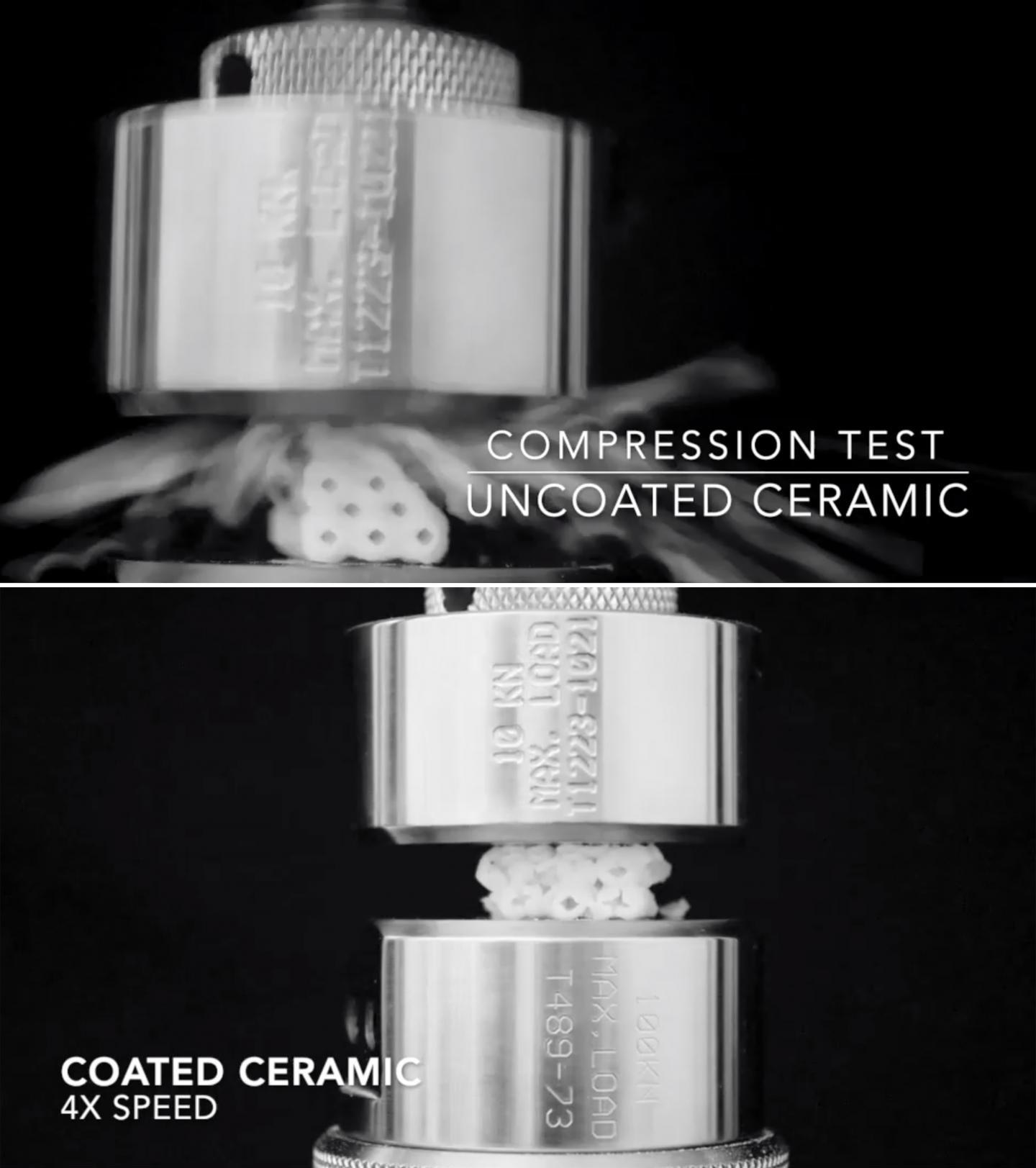Researchers from Rice University asserted that a thin shell of soft polymer can hold together knotty ceramic structures from shattering.
 A compression test of 3D-printed schwarzites either coated or uncoated with a thin polymer shows how the polymer keeps the ceramic from shattering. The materials could be used wherever very strong but lightweight materials are needed. Image Credit: Ajayan Research Group/Rice University.
A compression test of 3D-printed schwarzites either coated or uncoated with a thin polymer shows how the polymer keeps the ceramic from shattering. The materials could be used wherever very strong but lightweight materials are needed. Image Credit: Ajayan Research Group/Rice University.
Ceramics made using 3D printers crack under pressure similar to any plate or bowl. However, covering them in a soft polymer cured under ultraviolet light makes the same materials stand a chance of keeping their structural integrity, similar to a car windshield’s treated glass that is less likely to shatter.
The scientists from Rice’s Brown School of Engineering demonstrated the concept of schwarzites — complex lattices that existed only as a theory for decades but can now be made using 3D printers. Upon the addition of polymers, they resemble structures found in nature like bones and seashells that contain hardened platelets in a biopolymer matrix.
The research findings were published in the journal Science Advances.
Schwarzites, named after German scientist Hermann Schwarz, postulated in the 1880s that “negatively curved” structures could be used wherever highly robust yet lightweight materials are needed, ranging from batteries to bones to buildings.
Headed by Rice materials scientists Pulickel Ajayan and Muhammad Rahman and graduate student and lead author Seyed Mohammad Sajadi, the researchers proved through simulations and experiments that a coating of polymer no more than 100 µm thick can make fragile schwarzites up to 4.5 times more resistant to catastrophic fractures.
These structures do crack under stress but do not fall apart.
We’ve clearly seen that the uncoated structures are very brittle. But when we put the coated structures under compression, they will take the load until they completely break. And interestingly, even then they don’t completely break into pieces. They remain enclosed like laminated glass.
Muhammad Rahman, Department of Materials Science and NanoEngineering, Rice University
The research group included members from Hungary, India and Canada. They created computer models of the structures and printed them with a polymer-infused ceramic “ink.” The ceramic was cured on the fly by ultraviolet lights in the printer. It was then dipped in polymer and cured again.
Uncoated structures were used as controls and the intricate blocks were then subjected to high pressure. The control schwarzites shattered as expected; however, the polymer coating prevented the propagation of cracks in the others, thus enabling the structures to retain their form.
The scientists also compared the schwarzites to coated solid ceramics and discovered that the porous structures were inherently tougher.
The architecture definitely has a role. We saw that if we coat a solid structure, the effect of the polymer was not as effective as with the schwarzite.
Seyed Mohammad Sajadi, Study Lead Author and Graduate Student, Department of Materials Science and NanoEngineering, Rice University
According to Pulickel Ajayan, the coatings acted like the natural materials they mimic, with the polymer infusing defects in the ceramics and improving their resistance.
Rahman stated that various structural applications could benefit from polymer-enhanced ceramics. Moreover, their biocompatibility could eventually make them suitable for prosthetics.
I’m pretty sure that if we can optimize these structures topologically, they also show good promise for use as bioscaffolds.
Muhammad Rahman, Department of Materials Science and NanoEngineering, Rice University
Owl drop test
Drop Test. Video Credit: Ajayan Research Group/Rice University.
Journal Reference:
Sajadi, S. M., et al. (2021) Damage-tolerant 3D-printed ceramics via conformal coating. Science Advances. doi.org/10.1126/sciadv.abc5028.